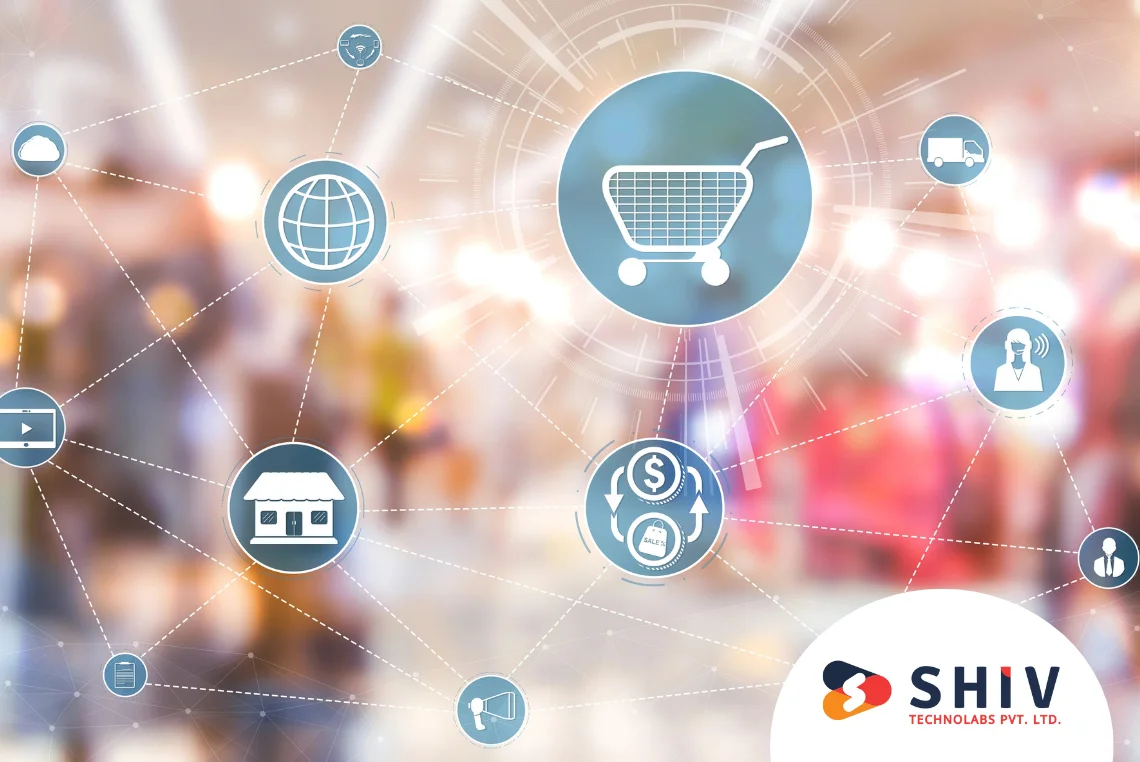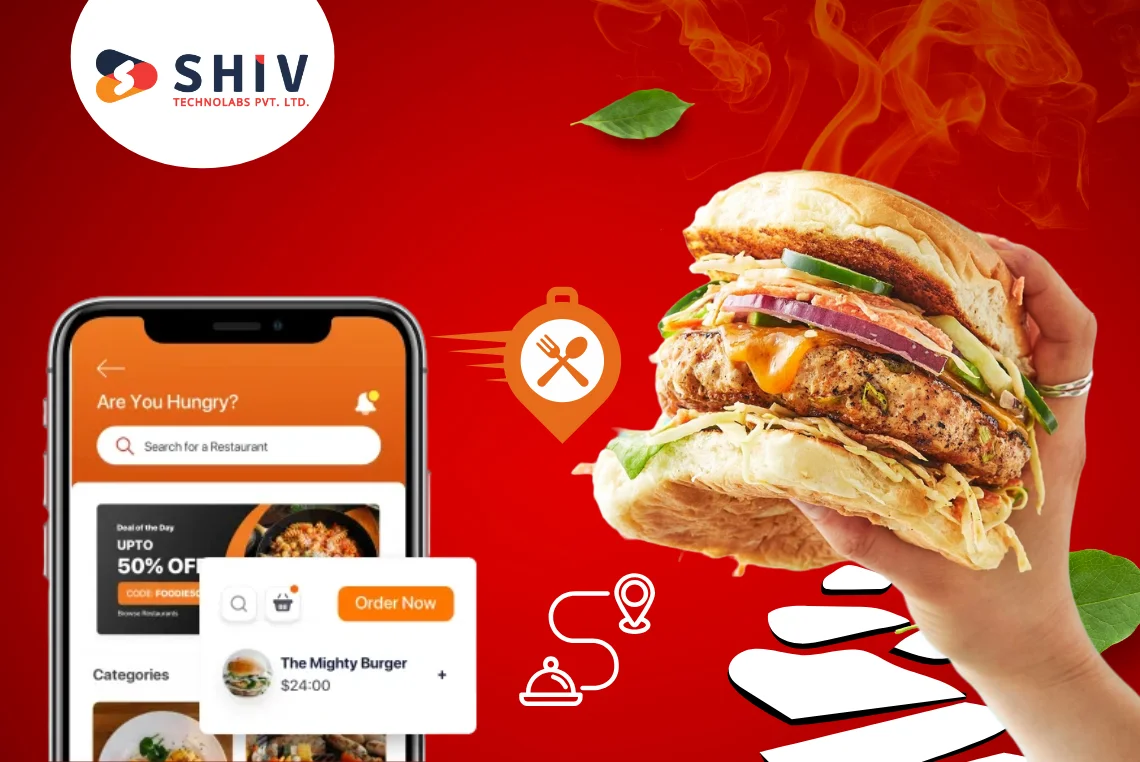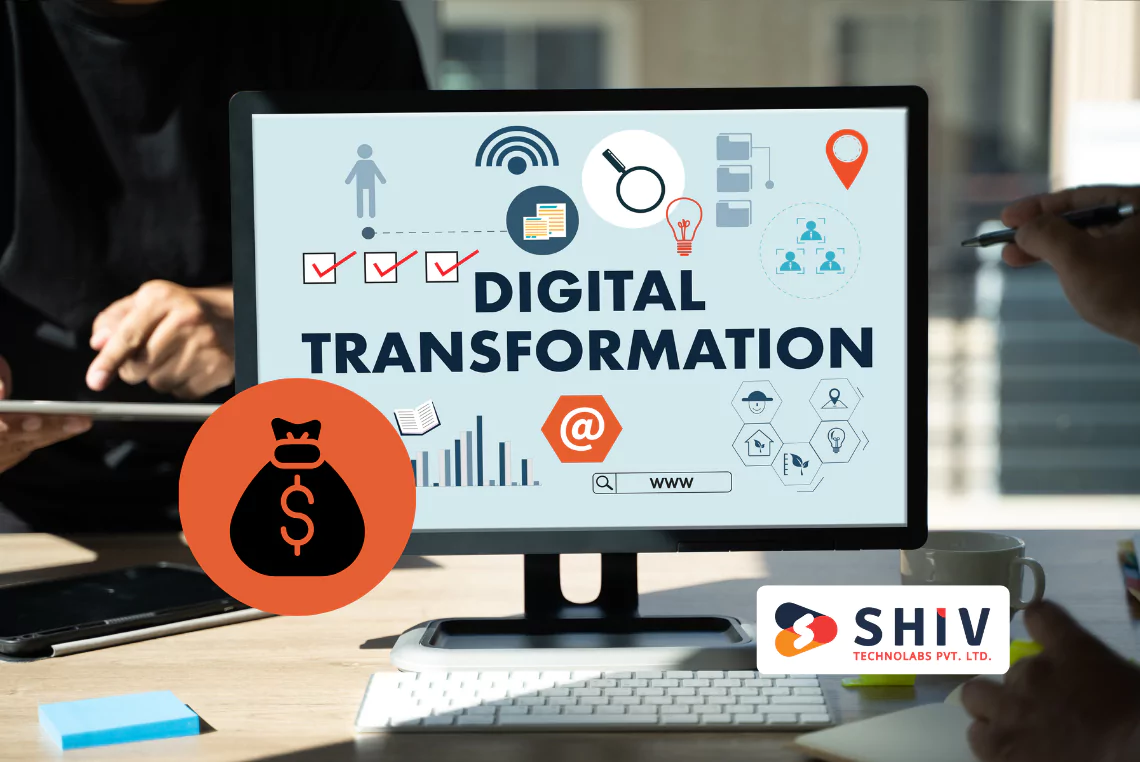Table of Contents
Retail has changed more in the past five years than in the previous fifty. Customers do not just browse in stores anymore; they compare prices on mobile apps, buy from Instagram, and pick up orders in physical outlets. This shift gave rise to omnichannel retail—a system where all customer touchpoints connect to create a single, smooth journey.
For startups, ignoring omnichannel retail is no longer an option. A report from Harvard Business Review found that 73% of shoppers use multiple channels during their buying journey. That means if your brand does not connect the dots between online and offline, you risk losing potential customers to competitors who do.
This blog will break down what omnichannel retail means, why it matters for startups, where to begin, the tools required, common challenges, a step-by-step roadmap, and even a practical case scenario.
For early-stage founders building their retail journey from scratch, choosing the best startup development service provider can make the transition into omnichannel smoother and more scalable.
What Is Omnichannel Retail?
At its core, omnichannel retail is about connecting online, offline, and digital sales touchpoints so customers experience a unified brand journey.
- Imagine a shopper sees your product on Instagram Shopping, visits your Shopify store to check details, and finally pays through POS billing at your physical outlet.
- Or picture a customer adding an item to their cart on your mobile app, then receiving an email reminder with a discount code, and finally completing the order on your website.
Both cases are omnichannel retail in action.
# Omnichannel vs. Multichannel
Many people confuse omnichannel with multichannel. Here’s the difference:
- Multichannel: Your brand is present on multiple platforms (store, website, Instagram, etc.), but they operate independently.
- Omnichannel: Every platform is connected. Customer data, stock, and transactions flow across channels without friction.
For startups, the difference matters. Multichannel might help you get noticed, but omnichannel helps you convert and retain customers by giving them flexibility, choice, and consistency.
Why Startups Need Omnichannel Retail Solutions?
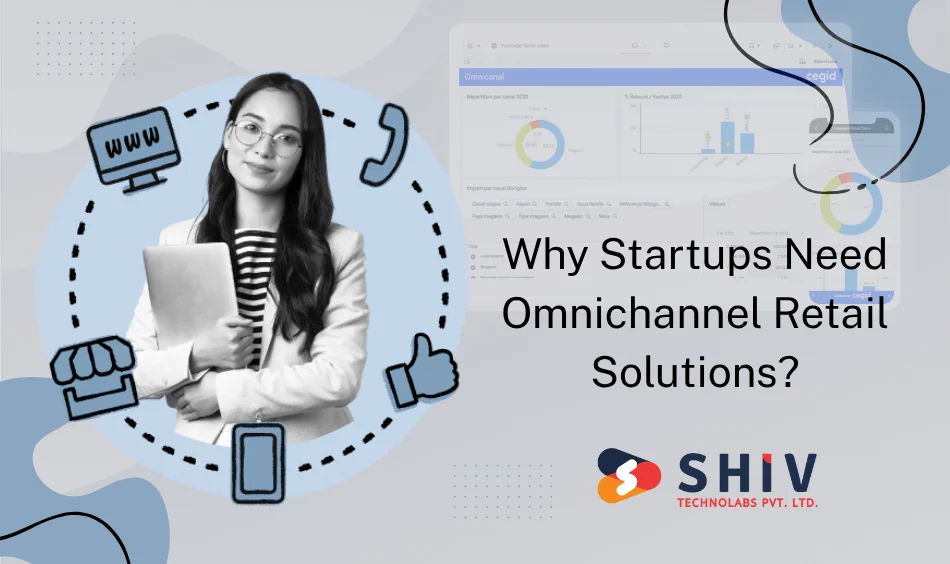
Startups often believe that omnichannel retail is something only large enterprises can afford. In reality, it is often more critical for startups because the first few years define how customers perceive their brand.
Missing out on connected experiences at this stage can make it harder to build trust, retain buyers, and compete with established players.
1. Meeting Customer Expectations
Today’s shoppers move across devices and platforms without thinking twice. They may:
- Discover your brand on Instagram,
- Compare products on your website,
- Ask questions on WhatsApp,
- And finally, purchase from a local store or app.
If these touchpoints are disconnected, the journey feels broken. Customers expect:
- Flexibility: Buy online, return in-store.
- Choice: Multiple payment and delivery options.
- Convenience: One brand experience across every channel.
Startups that cannot meet these expectations risk losing buyers to brands that can.
2. Faster Adaptability Compared to Larger Players
Big retailers usually operate with legacy systems that take months (sometimes years) to integrate. Startups have the advantage of starting fresh with modern, cloud-based tools.
By adopting omnichannel solutions early, small businesses can:
- Roll out new channels faster,
- Test customer preferences with lower risk,
- And pivot strategies without the burden of outdated systems.
This agility becomes a competitive edge, especially when competing against larger brands that move slowly.
3. Building Brand Loyalty from Day One
Customer loyalty is not built through one-time discounts or ads—it is built through consistent experiences. Research shows that omnichannel customers are:
- More likely to make repeat purchases,
- Less sensitive to price differences,
- And more likely to recommend brands to friends and family.
For a startup, gaining just 100 loyal buyers who shop repeatedly is often more valuable than chasing 1,000 one-time buyers. Omnichannel systems make loyalty programs, personalized offers, and repeat purchase incentives easier to manage.
4. Maximizing Limited Resources
Startups usually work with lean teams and tight budgets. Running disconnected channels means double the work—separate stock tracking, separate marketing campaigns, separate customer records. Omnichannel retail consolidates operations by:
- Centralizing stock management,
- Automating invoicing and returns,
- And creating one source of truth for customer data.
This not only saves time but also prevents costly errors, like selling items that are out of stock or sending the wrong promotions to customers.
5. Turning Data Into Insights
When sales and customer data come from disconnected sources, startups struggle to make sense of performance. Omnichannel solutions combine these data points into a single dashboard, helping founders answer questions like:
- Which channel drives the most conversions?
- What is the repeat purchase rate by platform?
- Which products sell better online versus offline?
Armed with this data, startups can make smarter decisions about where to invest next.
Where Should Startups Begin with Omnichannel?
1. Identify Core Sales Channels
Not every startup needs to be everywhere. Instead:
- Pick 2–3 main sales channels that fit your audience.
- Examples: eCommerce website + Instagram Shop + physical pop-up outlet.
- Data shows that focusing on fewer strong channels helps startups allocate resources wisely instead of spreading thin.
2. Build Centralized Inventory and Order Management
Without a unified dashboard, startups often face mismatched stock, double selling, or delayed refunds.
- A centralized system for stock, invoicing, and returns prevents these problems.
- It keeps track of product movement in real time, avoiding embarrassing “out of stock” experiences.
3. Focus on Payment and Checkout Consistency
Nothing frustrates a customer more than finding their favorite payment method missing.
- Standardize payment options across channels.
- Include: UPI, wallets, cards, and Buy Now Pay Later (BNPL).
- A consistent checkout experience builds trust and reduces cart abandonment.
4. Customer Data Integration
Customer data should not sit in silos.
- Build centralized profiles containing history, preferences, and loyalty rewards.
- This helps you personalize campaigns, send relevant offers, and reward loyal buyers.
- Avoiding scattered data also helps with compliance and reporting.
How Much Does Omnichannel Retail Cost for Startups?
The cost of building an omnichannel retail setup depends on factors like sales channels, technology stack, and integrations. While exact numbers vary, startups should consider three main investment areas:
- Shopify, WooCommerce, or Magento setup fees.
- Ranges from $2,000–$10,000, depending on features.
- Connecting inventory, orders, and customer data.
- Small startups may spend $5,000–$15,000; scaling businesses may require $20,000+.
POS and Payment Consistency
- Linking POS with online systems, enabling UPI, cards, and BNPL.
- Starts from $1,000–$5,000, depending on the POS provider.
Quick Table Example:
| Component | Cost Range (USD) | Notes |
|---|---|---|
| eCommerce Website | $2,000–$10,000 | Based on platform & design needs |
| ERP/CRM Integration | $5,000–$20,000+ | Depends on modules & scalability |
| POS Setup | $1,000–$5,000 | Varies by provider & outlets |
| AI Personalization | $2,000–$8,000 | Add-on for targeted campaigns |
Startups should budget $10,000–$30,000+ for a basic omnichannel setup, with costs scaling as the business grows.
Tools and Technologies That Power Omnichannel Retail
- ERP and CRM integrations: Connect operations, stock, and customer engagement into one system.
- POS software linked with eCommerce: Sync in-store sales with online channels instantly.
- AI-driven recommendations: Offer customers products based on preferences and past purchases.
- Analytics dashboards: Measure performance across channels to make informed decisions.
These technologies allow startups to act like larger enterprises without needing massive budgets.
Common Challenges Startups Face
Even with strong benefits, building omnichannel retail is not always easy. Startups often face:
- Limited budgets: Setting up tech integrations and systems can feel expensive upfront.
- Complex integration: Connecting ERP, POS, and online stores often requires technical expertise.
- Customer experience gaps: Maintaining consistent service across all channels is challenging.
- Data privacy and compliance: Regulations like GDPR or local data laws add extra layers of responsibility.
Acknowledging these hurdles early helps startups prepare realistic plans.
Practical Roadmap for Startups
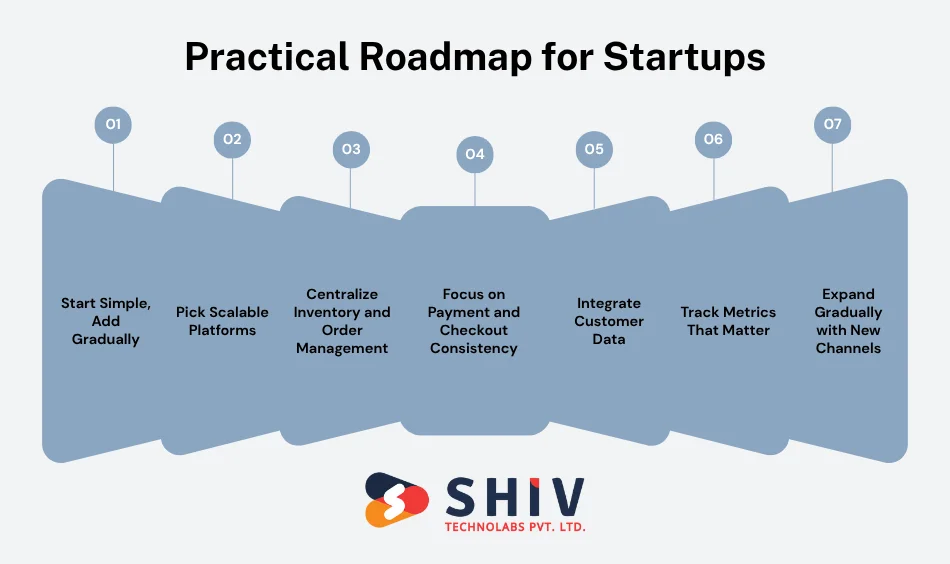
Building an omnichannel retail strategy can feel overwhelming for new businesses. The key is to avoid doing everything at once and instead follow a structured roadmap.
Below is a practical path that startups can adopt to gradually move from single-channel selling to a full omnichannel setup.
Step 1: Start Simple, Add Gradually
Many startups fail because they try to launch on every platform at the same time. This spreads budgets and teams too thin. The smarter approach is to start with the most impactful two channels and expand later.
- Recommended starting combo: your own eCommerce website + one social commerce channel (Instagram Shop or Facebook Shop).
- For example, if you sell fashion apparel, begin with a Shopify store and connect to Instagram Shopping, where your target audience spends time.
- Once sales stabilize, add a POS system for offline outlets, pop-ups, or events.
The rule: validate one stage before moving to the next.
Step 2: Pick Scalable Platforms
Choosing the right platforms early prevents costly migrations later. Startups need tools that are simple enough for a small team but also scalable for future growth.
- For eCommerce stores: Shopify (fast setup), WooCommerce (flexible for WordPress users), or Magento (for startups with larger product catalogs).
- For ERP/CRM systems: Odoo (affordable and modular), Zoho (good for small teams), or NetSuite (suited for scaling globally).
- For POS systems: Square, Shopify POS, or Lightspeed.
Example: A startup that begins on Shopify can later integrate with Odoo ERP without rebuilding its core system, ensuring long-term scalability.
Step 3: Centralize Inventory and Order Management
Disconnected stock tracking is the quickest way to lose customers. Imagine selling an item online only to realize it’s out of stock in your warehouse—this damages trust instantly.
- Use a centralized dashboard that connects online stores, POS, and warehouses.
- Sync stock levels in real time to avoid overselling.
- Automate returns and exchanges to reduce manual work.
Tools like TradeGecko (QuickBooks Commerce), Odoo Inventory, or Zoho Inventory can handle this effectively for startups.
Step 4: Focus on Payment and Checkout Consistency
Shoppers expect the same payment experience across all touchpoints. Any mismatch (e.g., wallet payments online but not in-store) creates friction.
- Standardize UPI, credit/debit cards, wallets, and Buy Now Pay Later (BNPL) options across every channel.
- Enable single-click checkout where possible to reduce drop-offs.
- Provide cash-on-delivery (COD) selectively if it matches local buying behavior.
Example: An electronics startup that offers BNPL both online and in-store builds credibility and attracts more first-time buyers.
Step 5: Integrate Customer Data
Customer data is the backbone of personalization and loyalty. If this data sits in silos, startups miss the opportunity to nurture long-term buyers.
- Build centralized profiles containing order history, wishlists, and loyalty rewards.
- Use these insights to send targeted promotions instead of generic campaigns.
- Link CRM data with email marketing and WhatsApp campaigns to maintain consistency.
Example: A skincare brand could recommend products based on past purchases—if a customer bought face serum, the system can suggest moisturizer or sunscreen in the next campaign.
Step 6: Track Metrics That Matter
Numbers guide strategy. Without the right metrics, startups often waste resources on the wrong channels.
- Customer Acquisition Cost (CAC): How much you spend to gain one customer.
- Repeat Purchase Rate (RPR): How often customers come back.
- Channel ROI: Which channel delivers the best return for the budget invested?
- Average Order Value (AOV): How much customers spend per transaction.
Use analytics dashboards (Google Analytics, Shopify Reports, or Zoho Analytics) to monitor these KPIs regularly.
Step 7: Expand Gradually with New Channels
Once the foundation is strong, startups can expand:
- Add offline channels like pop-up stores, kiosks, or collaborations.
- Introduce mobile apps for repeat customers.
- Experiment with marketplaces like Amazon or Flipkart for extra reach.
But expansion should always follow proven performance on initial channels—not the other way around.
Case Example: Omnichannel in Action for a Startup
Imagine a small apparel brand starting online.
- They run Instagram ads that drive customers to their Shopify store.
- Shoppers can choose in-store pickup at their pop-up outlet.
- POS systems sync with Shopify, so stock updates in real time.
Result:
- Higher conversion because customers see multiple buying options.
- Reduced returns since shoppers try items in-store before completing orders.
- Better brand loyalty because the brand offered choice and convenience early on.
Ready to Build Your Startup’s Omnichannel Journey with Shiv Technolabs?
Startups need more than just tools—they need a roadmap that connects sales, customers, and operations without draining resources. That’s where our digital commerce solutions come in, helping founders build systems that are practical today and scalable tomorrow.
How we help startups grow:
- Custom ERP & CRM: Centralized dashboards for stock, orders, and customer data.
- eCommerce + POS Integration: Shopify, WooCommerce, or Magento connected with in-store systems for real-time sync.
- AI Personalization: Smart recommendations and campaigns that increase repeat purchases.
- Consulting & Strategy: Step-by-step guidance on channels, integrations, and KPIs.
With Shiv Technolabs, startups get scalable solutions designed to grow alongside their business—not hold them back.
Conclusion
Omnichannel retail is no longer a luxury reserved for large enterprises. For startups, it is a growth necessity. By connecting your sales channels, building centralized systems, and focusing on customer data, you can turn early buyers into long-term loyal customers.
Start small, build gradually, and always measure what matters. Each step strengthens your retail foundation and brings you closer to scalable growth.
Ready to connect your sales channels and grow smarter? Contact Shiv Technolabs today.

